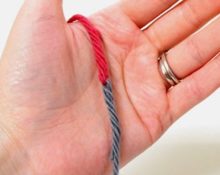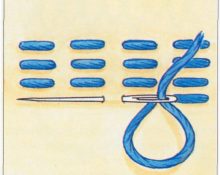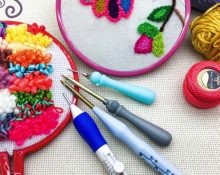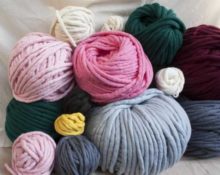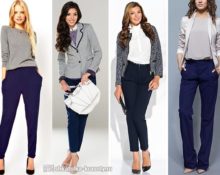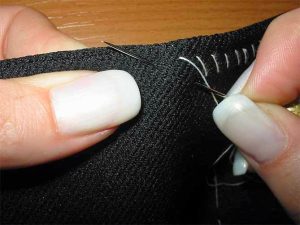
sdelay.sam.ua
The key difference between bias stitches and straight stitches is their position on the material. Straight stitches are worked by strictly observing a straight line from which you cannot deviate. When using oblique stitches, a certain angle is set at which the seam is placed. This sewing technique is used quite often. It guarantees strong fixation of parts and layers. In addition, oblique seams have greater elasticity compared to straight sewing techniques. They can secure the material without preventing it from stretching when necessary. The approach is often used for permanent and temporary sutures. Basting and basting refers to temporary sewing. There are several varieties of this technique of stitching parts.
Oblique stitches - how to make beautiful stitches, types of oblique seams
The type of oblique seams used is chosen by the master, based on the purpose of the work and the characteristics of the product. What type of oblique stitches are there:
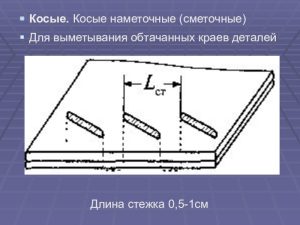
sdelay.sam.ua
- Plastering. Allows you to seamlessly connect cut fragments.It is used when working with dense fabric that does not crumble due to accidental tears and cuts. The stitch is every millimeter, the distance from the edge is three millimeters. A beautiful seam will be ensured by high-quality silk thread. The elements are placed wrong side up.
- Quilted. It is used when connecting the lining and the main part, mainly when sewing jackets, coats, and raincoats. Sewing using this technique makes collars, cuffs, and lapels elastic and stable. Centimeter stitches pass completely through the lining, while touching the main material very little. The result is an aesthetic external seam, invisible on the front side. It is important to control the needle so as not to pierce the facial material.
- Hemming. The stitch is used when sewing open edges and folded edges. It is used to process outerwear made from fabrics that are not prone to fraying. If the fabric is frayed or has a thin structure, a bias hem stitch is used for a closed cut. The step length is three to five millimeters. It is important to pierce the outer material only halfway.
- Overedge. Used when working with fraying fabrics. Keeps cuts neat, preventing them from crumbling. It is laid from the right side to the left. The line will look neat if you do not tighten the thread while sewing. Cotton thread is used.
- Basting. Provides reliability when stitching fragments. The processing of the product is carried out more carefully and accurately. The seam is elastic, allowing the fabric to stretch while maintaining the fit. The stitch can have a length from seven millimeters to two centimeters. It is used when it is necessary to baste shelves on side linings in parallel with the neckline and armhole.
- Breading. When all the sections of the fragments have been processed, basting is carried out.Then it is sent for ironing. During processing, the fragment from which the edges are edged is located at the bottom. The edge is straightened in parallel with one hand, immediately secured with a seam with the other hand. The stitch is from five to ten millimeters at an identical distance from each other.
Bias stitches are not suitable for sewing plaid, striped or patterned fabrics. Wet, heat treatment distorts the images on the canvas, as the stitching is pulled across. Often, oblique stitches are used to create accessories - leather wallets, bags. Here they act as decoration. For each type of stitch, it is important to follow the rules that help create a neat and beautiful seam.


 0
0
